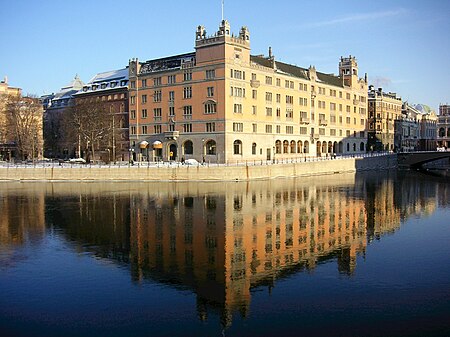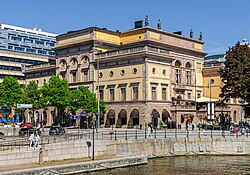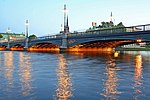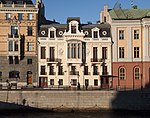Rosenbad
1902 establishments in SwedenArt Nouveau architecture in StockholmArt Nouveau commercial buildingsArt Nouveau government buildingsBuildings and structures in Stockholm ... and 3 more
Commercial buildings completed in 1902Government buildings in SwedenGovernment of Sweden

Rosenbad (Swedish: [ˈrûːsɛnˌbɑːd], lit. "rosen bath") is a building in central Stockholm, precinct of Norrmalm. It is a building owned by the Swedish State and serves as the seat of the Government. Rosenbad is located on Strömgatan on the north side of the river Norrström. It was designed by Art Nouveau architect Ferdinand Boberg, and completed in 1902. It originally housed a variety of functions, including a restaurant (until 1956) of the same name.
Excerpt from the Wikipedia article Rosenbad (License: CC BY-SA 3.0, Authors, Images).Rosenbad
Strömgatan, Stockholm Norrmalm (Norrmalms stadsdelsområde)
Geographical coordinates (GPS) Address External links Nearby Places Show on map
Geographical coordinates (GPS)
| Latitude | Longitude |
|---|---|
| N 59.328333333333 ° | E 18.065555555556 ° |
Address
Rosenbad
Strömgatan
103 21 Stockholm, Norrmalm (Norrmalms stadsdelsområde)
Sweden
Open on Google Maps





